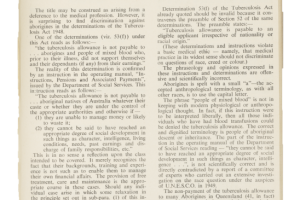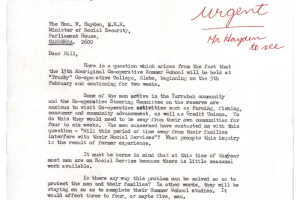
Artefacts about Activism & Advocacy
With many Aboriginal and Torres Strait Islander people missing out on payments, the Federal Council of Aboriginal Advancement wrote a leaflet to provide guidance about accessing payments.
As well as working with communities on government-run reserves in the Northern Territory, Vai Stanton Mimbinggal worked with the government to improve conditions for Aboriginal people nationally.
After discovering that the departments of Health and Social Services were discriminatory in how they delivered Tuberculosis Allowance, activists successfully campaigned to change government instructions.
When 23 Aboriginal people stopped getting Unemployment Benefit because they had not taken enough steps to find a job, supporters argued that no jobs were open to them.
In 1965, Aboriginal workers paid at below-award rates could not get government payments. The Federal Council for the Advancement of Aborigines and Torres Strait Islanders raised the issue with government, labelling it ‘coercion’ and ‘discrimination’.
The Northern Territory Council for Aboriginal Rights, led by Aboriginal activists, tried to draw international attention to their cause by appealing to the United Nations.
Getting access to payments often relied on direct advocacy. Letters from the principal of an Aboriginal co-operative school provide examples.
An article about a new Aboriginal study grant profiled 3 of its early success stories – people who would go on to be well-known public figures over the decades ahead.







